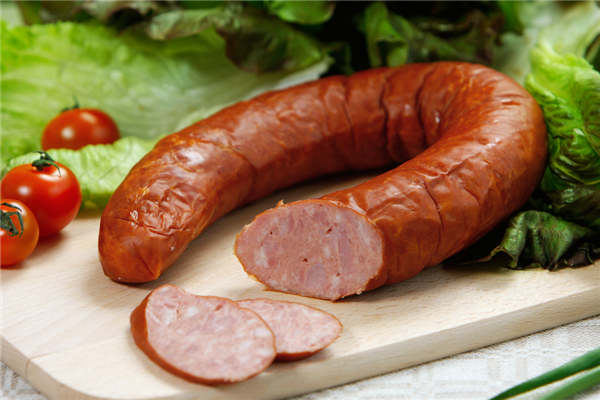 |
|
Chinese sausages are usually sliced thinly, steamed or stir-fried to add much needed flavor to bland winter greens. [Photo provided to China Daily] |
Editor's Note: China is divided into as many culinary regions as there are different ethnic groups. Its geographical diversity and kaleidoscopic cultural profiles contribute to the unending banquet of flavors.
Chinese sausages are very different from the usual Western varieties. They are very firm, dense and intense, and closer to salami, pepperoni or chorizo.
Depending on regions, they can be sweet and salty, like the wine-scented Cantonese sausages, or spicy and savory like the red peppered links of Sichuan and Yunnan.
But Chinese sausages are almost never eaten fresh.
Instead, they are hung up to dry thoroughly in the brisk north winds of winter until they are thoroughly cured and dried. Then they are sliced thinly, steamed or stir-fried to add much needed flavor to bland winter greens.
Sausage-making is most often done during the last month of the lunar calendar, la yue, the hunting month.
It is part of an annual food ritual in which sausages are filled and hung, and ducks, chickens and strips of belly pork or ribs are cured. The sight of rosy sausages and honey brown meats hanging outside to dry in courtyards all over China is indicative of how much these cured meats are loved.
My nanny tells me that, in the villages, pigs are slaughtered as winter arrives. That's when every part of the pig is used and nothing is wasted.
But to stretch the pork out for a whole year, the best way is to make sausages and salty cured pork from hocks and hams to strips of fatty belly.
Soy sauce, bean paste, salt, sugar and wine are the main preservatives.
In Guangdong province, plenty of yellow wine and lots of cane sugar convert the meat into deep red links. Fiery white spirits are added as an additional preservative.
Chinese cooking can be lavish, but it is also a cuisine that lauds frugality. Sausages are made deeply flavored so a little goes a long way. The dried links lend their intensity to the other ingredients they are cooked with, thus taking on the role of seasoning.
Whenever more intense flavoring is needed, sausages add an instant burst of sweet and savory.
Savory steamed rice cakes using radishes, yams or pumpkins, for instance, often hide nuggets of diced sausages, dried shrimps and dried shiitake mushrooms - that Chinese trinity of pure flavor.
The sausages are also excellent pantry basics, having a long shelf life.
Perhaps there is the beginning of a backlash against too much fast food and convenience foods because, in recent years, many Chinese households have started to go back to tradition.
Even if they cannot make their own, their friendly market butchers are offering sausage-making services.
As the weather cools, juicy links are being strung up to dry at butchers from Shanghai to Beijing.
You can choose your cut of meat, deciding how much or how little fat you want in your personalized links. Then you can choose what style of sausage you prefer.
There are the cumin and fennel scented savory sausages, sausages spiced with Sichuan peppercorns and chili flakes, heavily garlic-infused sausages or the classic Cantonese links scented with quality rice wine.
And if you want to attempt sausage-making yourself, you would simply be joining countless generations of home chefs in continuing a long-established culinary heritage.